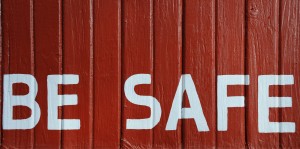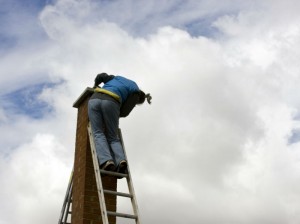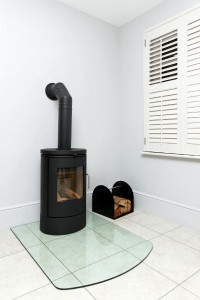6 Questions for Your Chimney Sweep
Choosing the right company to handle all of your chimney and fireplace needs can be a tough task. Knowing which questions to ask can and will certainly smooth out the process for you.
Choosing the right company to handle all of your chimney and fireplace needs can be a tough task. Knowing which questions to ask can and will certainly smooth out the process for you.
The Proper Way of Removing Ash from Your Fireplace
There are many things you can do with ash; it’s not just dirt in your fireplace. It can be used in growing and nourishing plants. Artistic people even use it as replacement for charcoal in making beautiful drawings. However, these things still need to be done with caution because ash can also be harmful to the body. Not everyone’s immune system can tolerate the toxins that are in ash. These toxins in the ash that can trigger a dangerous cold for people with sensitive noses and even an asthma attack in worse cases.
If you can’t find a particularly good use for ash, it is better to throw it out than to let it accumulate. This is especially true in the fireplace. That’s why it’s important to know how to properly dispose of ash. My company, Jack Pixley Sweeps will walk you through the things that will be done in removing ash from your fireplace.
Where there is Fire, there is Ash
Ash results from the burning of combustible materials. Wood, what we usually use in a fireplace, is one of many examples. Ash stays in the firebox to either help re-ignite flame or simply cool down and be swept out. It can be very easy to remove ash if you know what you have to do, but it can be extremely challenging for those who have no idea what they’re doing. To address this, Jack Pixley Sweeps has devised a well laid out plan to help lessen the trouble of properly removing ash in your fireplace. It is a step-by-step process that is preferably done by a professional sweep so that bigger problems are prevented.
The Process
The first step is to prepare your metal trash bin and dust pan. Metal is used as a precautionary measure because there is still a chance that pieces of coal will be hidden in the ash and it could burn through other materials if you’re not careful. Carefully slide the ash into the dust pan and make sure that you can properly remove the ash without it touching the floor. Take note that the ash needs to be cool before you do this to prevent little bits of charcoal from setting off a fire. Once it’s in the dust pan, transfer it into the metal trash bin, seal tightly because the lack of oxygen will also help put out coals just in case, and place outside your home.
Most of the time it is not necessary to totally remove all the ash. If you are constantly using your fireplace especially during winter, we suggest you keep about an inch thick of ash so that you won’t have trouble re-igniting the flame.
Like we said before, complications can be avoided when you call on a professional. Our CSIA-certified chimney sweeps are outstanding in both chimney sweeping and fireplace maintenance. We guarantee that our services are worth every penny you spend. Jack Pixley Sweeps: “The name you can trust!”
Improper Flow
The most important job of your chimney is for warm air come into your home and cold air to escape. Not only is this interchange important, but a clean chimney, that is well-maintained will also filter out most harmful gases. If anything gets inside your chimney and interrupts or diverts air in a way that is out of balance – your health and your home could be at risk.

In order to bring the right air in…at the right balance, you cannot let anything blocking the air to remain. Annual maintenance of your chimney, keeps channels open.
There are many reasons why a chimney gets too much draft. It could be due to a clogged chimney flue that’s filled with creosote. It could also be caused by other objects or even animals that make their way into the flue. Or it could also be because of poor chimney maintenance. It could be many other things. It’s important to solve this problem right away because of health and safety reasons. This can help lessen the chances for harmful toxins from entering the home and for it to safely make its way to the outside of the house without having to worry about fire or dangerous chemicals in the air.
You’ll know when there’s a draft when there is little amount of heat produced by the fire in your fireplace. Another basic observation is a distinct smell lingering inside or air entering your home through the firebox. Here at Jack Pixley Sweeps we make sure your home is cared for in the best way possible; with excellent services and licensed CSIA Certified Chimney Sweeps.
The Symptoms
The Remedy
Draft in the chimney can be solved by doing four things:
If your home has a chimney, you’ll have to have it cleaned sooner or later; it’s recommended that you have it done yearly at the very least. The National Fire Protection Association (NFPA) and Chimney Safety Institute of America (CSIA) classify chimney inspections into three categories: Level 1, Level 2, or Level 3. Each level of inspection covers specific items depending on the equipment and how it is vented to the outside of your home. Taking an in-depth look at all three levels will give you a clearer understanding of what’s completed during each and how each subsequent level builds on the work completed during the previous level(s).

Having your chimney inspected and cleaned annually helps minimize any safety risks and maximizes performance.
1.Level 1 – these are completed during a routine chimney cleaning and, as such, should be carried out annually. This more routine level of evaluation is the recommended course of action when the conditions of use have not changed over the past year. These inspections are limited in scope to the portions of the chimney’s exterior and interior that are easily accessible as well as the portions of the fireplace and flue that are readily accessible. The technician will look to gauge the condition of the flue and chimney structure as well as your basic fireplace installation and connections. The technician will also check to make sure that the chimney is free of obstructions and combustible deposits.
2.Level 2 – these are more detailed and thorough than the previous level and are recommended either when the conditions of use have changed during the past year or when a Level 1 inspection revealed an issue that warrants a more thorough inspection. A few notable issues that may call for a more in-depth inspection are homeowners opting to convert their traditional fireplace to a gas unit or when an event has occurred that could have compromised the chimney in some way (e.g., chimney fire, earthquake, or foundation settling). It’s also recommended upon the sale or transfer of the property. These inspections include everything a Level 1 inspection would include as well as the inspection of accessible areas of the attic, basement, and crawlspace and a video evaluation of the inside of your chimney.
3.Level 3 – these are the most in-depth of all the inspection types and are conducted after either a Level 1 or Level 2 inspection has revealed a major issue in parts of the chimney and/or flue that are not easily accessible. These inspections include all of the areas covered in Level 1 and Level 2 inspections as well as inspection of otherwise concealed areas to further investigate known or suspected problems. Because certain portions of Level 3 inspections require some sort of demolition to, within, or around your home, the technician will discuss this work with you prior to beginning anything.
That’s a lot of information to pack into one blog. The information is, however, extremely important. Understanding the general scope of work required with each level of inspection is critical to being an informed homeowner and consumer. We want all of our customers to be pleased with the work we do and not to be blindsided by the costs that go along with it. We wish you a happy and safe holiday season.
To those of us living in the Minneapolis / St. Paul areas, keeping warm is a top priority for more of the year than we’d like to admit. Many homeowners use wood stoves and fireplaces to supplement central heating, so it’s important to know how to care for your wood burning appliance. If you have a wood stove, some of the following tips can be helpful.
First off, let’s cover the don’ts. Never burn driftwood, artificial logs, treated wood, or trash, which could contain zinc, sulfur, plastic, or lead. It might be easier to assume that if you can seal the door, you’re not breathing anything dangerous, but these things can emit harmful gases when burned that could start a chimney fire or compromise your air quality.

Make sure that any wood you use is properly seasoned. Wet or green wood will cause additional creosote buildup.
As with any wood burning appliance, it is always best to burn only dry, seasoned wood. This will maximize heating efficiency and minimize creosote buildup. Small, hot fires that range between 300°-400° degrees is what you’re aiming for. If you have a stack thermometer installed, it’s easier to maintain this temperature for optimum efficiency and the least amount of pollution. Another way to determine if your fire is burning hot and clean is to take a look outside. The less smoke you see coming out of chimney the better.
Keep those air-intake vents clean. Ash can collect around the vents, so be sure to remove it regularly. Not only will this help you keep your fire hotter, it will also mean that your fire won’t require as much oxygen to burn. (And guess where the oxygen comes from? That’s right, your home.) Another thing to keep in mind is that other exhaust appliances can interfere with the air consumed by your wood stove. If the fire doesn’t have enough air, smoke will reverse its flow and enter your home.
Make sure your stove is safe. A safety tested wood stove will bear an NFPA (National Fire Protection Association) label to identify it as being in compliance with building and safety codes. At Jack Pixley, we are equipped to install top-quality wood stoves that adhere to safety codes, and we’re certified to keep your stove and chimney clean and in proper working order. We know what to look for and where, and are here to look out for your safety.
A wood stove can be a great asset for keeping your home warm, but remember that heavy use also means faster creosote buildup. Creosote buildup is a part of every wood burning appliance, no matter how efficient your fires are, and it’s important to keep the chimney clear of creosote or any other obstruction. The Chimney Safety Institute of America recommends having your wood stove and chimney inspected and cleaned at least annually to ensure that every component is working properly and safely. Don’t hesitate to give us a call at (763) 422-0481. We also offer convenient online scheduling if you’re strapped for time.